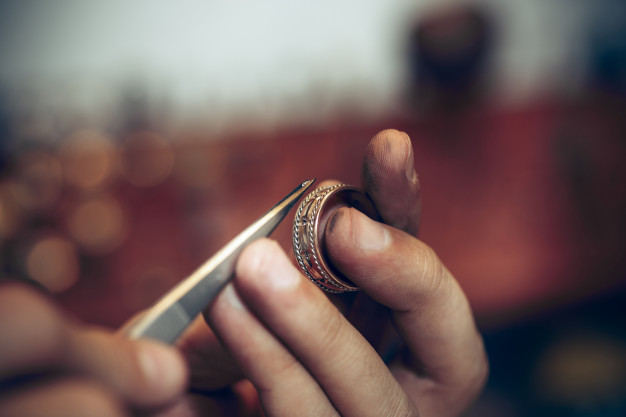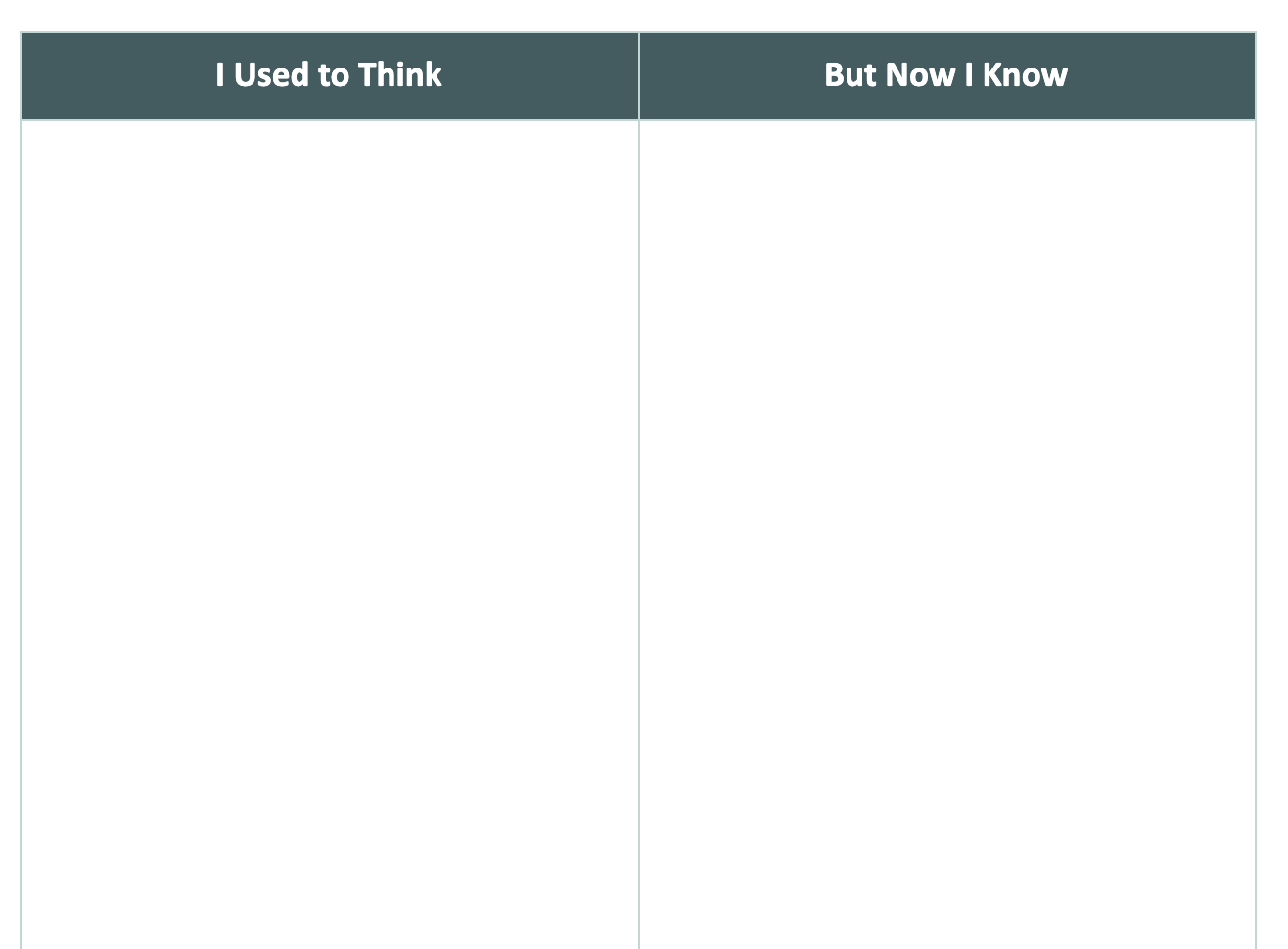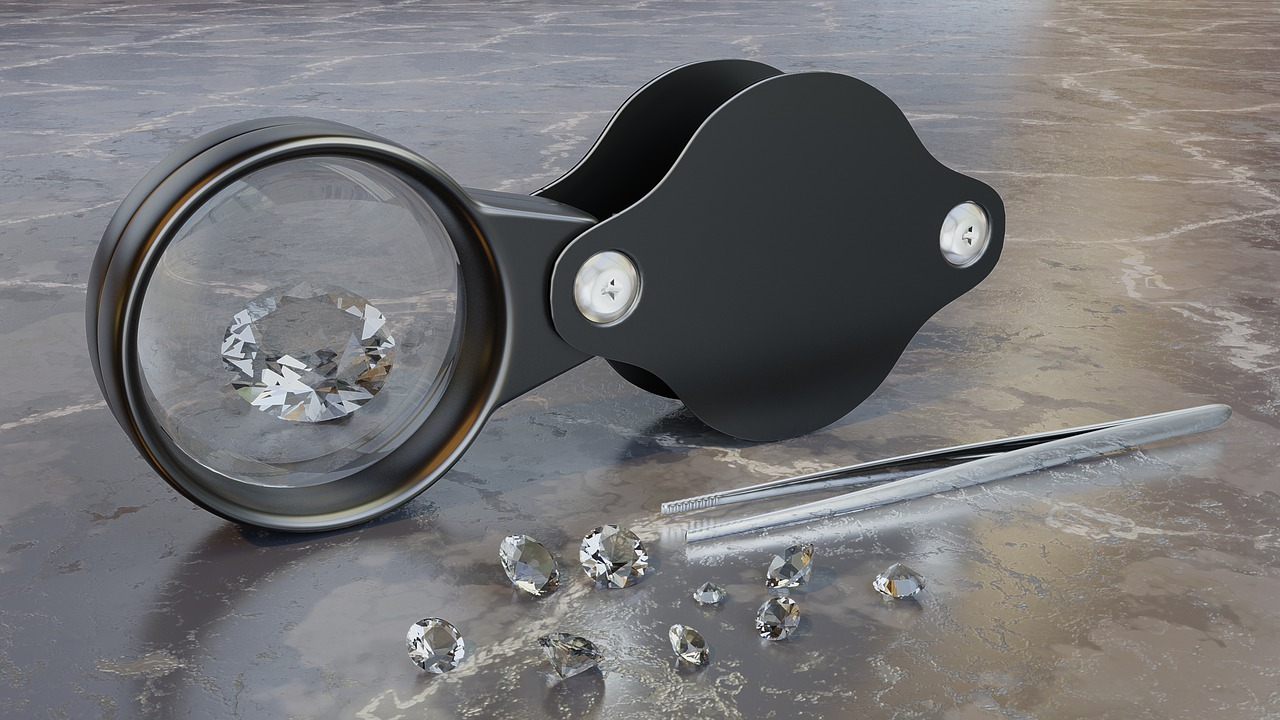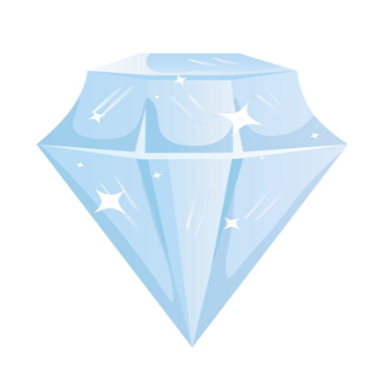Summary
What do jewelers do? How do they learn their craft? This series of activities will help you better understand the skills needed for a career as a jeweler. Jewelers have a variety of opportunities to work for companies creating new designs and making repairs, or to work for themselves crafting custom pieces for clients. Jewelers are creative, detail-oriented problem-solvers who work with specialized tools to create wearable art. These activities will help you better understand the work that jewelers do and consider whether this is a career that might be a great fit for you!
Overview
Do you like to work with your hands, get creative, and solve problems? Then a career in manufacturing might be just right for you! Workers in the Manufacturing career cluster sometimes work in factories or in businesses where they take materials and turn them into something new. One of the many careers that falls into this cluster is jewelry making.

A person who creates, repairs, or sells jewelry is called a jeweler. Jewelers might work for a larger company or own their own business. Every day, jewelers use their hands to create detailed pieces of jewelry and repair items that people cherish most. The life of a jeweler includes repairing jewelry, setting stones (diamonds, emeralds, rubies, etc.), creating jewelry items to sell in stores, and making custom orders. The average salary for a jeweler is $18,000 - $30,000 per year. Highly qualified and experienced jewelers can make $30,000 - $75,000 per year.
To work in this field, you will need a high school diploma, but most of your training will come on the job or in the form of apprenticeships and extra classes. An apprenticeship is when someone new to a job works under an experienced person to learn a craft. Continued training throughout your career is required to become a master jeweler. Jewelers can add skill certifications through organizations such as Jewelers of America.
While you are in middle and high school, you can start making your own jewelry to understand the basics of jewelry making. There are many tutorials online that can inspire you, teach you how to get started, or teach you more detailed skills. You can also apply for jobs in jewelry stores to start learning more about the work.
To be successful in their jobs, jewelers need a wide range of skills, including:
Analytical Skills. When repairs or custom orders are required, jewelers need to be ready to problem-solve and tinker to identify new solutions.
Creativity. Jewelers can create their own custom pieces and styles. Customers might be looking for something unique, and creative jewelers can provide the one-of-a-kind piece they are looking for.
Patience. Jewelry can take a lot of time to create. Jewelers also need to have steady hands as they work on small details.
Ingenuity. Jewelers use both cutting-edge and traditional tools to give customers just what they want. Experienced jewelers can identify the right tool for the job and apply their skills to a variety of needs.
Interpersonal Skills. Jewelers might also be entrepreneurs who own their own business and interact with customers daily. Jewelers need to be able to find what their customer needs and provide the required services.
Dependability. Customers often trust jewelers with their most prized possessions. It is important that jewelers have integrity and be dependable to encourage repeat customers.
Keep reading to explore how jewelers use both traditional tools and newer technology to create wearable works of art.
Materials List
Computer or tablet with internet access
Pencil or pen
Sticky notes
Jeweler Packet (attached)
What To Do
See what the life of a jeweler is really like in the Zoom Into a Career video featuring Oklahoma’s own BC Clark Jewelers.
Explore how jewelry has changed throughout history with an interactive timeline and get inspired to design your own jewelry.
Learn about the tools jewelers use to make both custom and mass-produced jewelry. Then, test your own problem-solving skills by connecting tools to their names to decode a mystery phrase.
If you are ready for more, take a look at Jewel School, a YouTube channel with tons of videos that demonstrate how to create your own amazing wearable art.

Activity 1
Before you start designing or making jewelry, take a few minutes to learn what it means to be a jeweler from a professional in the field. BC Clark is one of Oklahoma’s oldest jewelry companies. So many people sing the company’s jingle during the holiday season that it is almost an unofficial Christmas carol! (You can sing along here: BC Clark Jingle.)
Materials
Computer or tablet with Internet access
Pencil or pen
I Used to Think...But Now I Know activity (page 7 of the Jeweler Packet)
Instructions
Before you watch the video, write down what you already know about what jewelers do or what you think their workdays might be like in the "I Used to Think" column of the table on page 7.
Click here to learn more about what it’s like to be a jeweler and see the tools that jewelers use and the works of wearable art they create each day.
After viewing the video, reflect on the career talk by completing the "But Now I Know" side of the table.
What has changed about what you think jewelers do? What has stayed the same?

Activity 2
When did people begin making jewelry, what materials have they used, and how has the styling of jewelry changed? As you visit the interactive timeline below, think about how jewelry has changed over time and how it has remained the same.
Materials
Computer or tablet with internet access
Pencil or pen
I Notice, I Wonder activity (page 9)
Jewelry Design activity (page 10)
Note: This timeline contains just a few examples of jewelry found throughout time and around the world. Feel free to explore and search for other examples from other places and cultures. Think about what you know about using keywords to search (using the word jewelry and the place or time you want to search) and finding reliable sources as you search (well-known sources or websites that end with .org or .edu).
Instructions
Visit the Jewelry Throughout History Interactive Timeline.
Write down what you notice about the jewelry and how pieces are similar or different.
Record any questions you have about the jewelry or the jewelry making process.
Now that you have had a chance to take a look at some jewelry for inspiration, see if you can design a piece of your own. Using the circle found on page 10, create your own unique design. Will it be a ring, a necklace, a brooch, or some other great piece? Use your imagination and make it your own!
Activity 3
Jewelers use a wide variety of both cutting edge and classic tools. Some jewelers work to mass produce multiple copies of a type of jewelry while others handcraft original pieces. What is the best way to manufacture jewelry? This activity will help you determine which method is best.
Materials
Computer or Tablet
Internet Access
Tug of War activity (page 12)
Sticky Notes
Pen or pencil
Instructions
As you watch the two videos below, think about the pros and cons of mass manufacturing versus custom designs. Record the pros for each type of design on sticky notes with one pro per sticky note.
Bobby White handmade jewelry:
Vs.
Wax casting mass-produced rings:
Using the chart on page 12, rank your sticky notes from which has the strongest "tug" or argument for that choice to which has the weakest "tug."
Once you have finished, decide which side has the strongest tug overall.
Consider your choice. Do you think others would agree or disagree?
Bonus Activity
Can you name some of the tools that jewelers use? Click the link below to get a copy of the Tools of the Trade game. Using the line drawing tool, connect each tool to its name. Then, use the collection of letters that your lines pass through to decode a two-word mystery phrase.
(Hint: The answer is at the bottom of the Sources list. No peeking!)

Extend
Ready to try to make your own jewelry? Check out the Jewel School YouTube channel for tips on tools and supplies and instructions to create many types and styles of jewelry.
Want to Learn More?
You can also take a look at My Next Move or Jewelers of America to discover more about jewelers, what they do, and the knowledge, skills, and abilities needed in the field.
There are other careers related to being a jeweler that you can find here at My Next Move. Jeweler isn’t the only career to explore in the Manufacturing cluster. Check out the other careers classified as Manufacturing work to see even more options that let you work with your hands, create, and solve problems.
Sources
[Allphotobangkok]. (2014). Stone factory [Image]. Pixabay. https://pixabay.com/photos/work-making-stone-factory-4678695/
BC Clark Jewelers. (2019, Nov. 21). The BC Clark jingle [Video]. YouTube. https://www.youtube.com/watch?v=mo1RLKcqxew
White, B. (2019, Feb. 17). Handmade jewelry vs mass produced [Video]. YouTube. https://www.youtube.com/watch?v=kThxuHmQh5w&feature=youtu.be
Britannica. (2020). The history of jewelry design. https://www.britannica.com/art/jewelry/The-history-of-jewelry-design
Got All Your Marbles? Interchangeable Jewelry. (2013. June 28). How it's made - lost wax casting [Video]. YouTube. https://www.youtube.com/watch?v=GWVli5iY8BI&feature=youtu.be
Jewel School. (2011). YouTube Channel. https://www.youtube.com/c/jtvjewelschool/featured
Jeweler-Mike Holmes- Zoom Into Your Career (2021). K20 Center. [Video] YouTube. https://www.youtube.com/watch?v=1bxUx-SVl9U
Jewelers of America. (2013). Careers in the jewelry industry: Your guide to a bright and shining future. Jewelers of America. https://www.jewelers.org/images/files/jewelry-careers-guide/files/inc/78363bb543.pdf
[karnbadjatia]. (2015). Jewelry manufacturing [Image]. https://pixabay.com/photos/jewelry-manufacturing-manufacturing-1381501/pixaby.com
K20 Center. (n.d.). I Notice, I Wonder. Strategies. https://learn.k20center.ou.edu/strategy/137
K20 Center. (n.d.). I Used to Think...But Now I Know. Strategies. https://learn.k20center.ou.edu/strategy/137
K20 Center. (n.d.). Tug-of-War. Strategies. https://learn.k20center.ou.edu/strategy/98
[Master1305]. (2020). Jeweler at work [Image]. Freepik. https://www.freepik.com/free-photo/jeweler-work-jewelry_9264928.htm
[MasterTux]. (2018). Magnifying glass [Image]. https://pixabay.com/photos/magnifying-glass-diamonds-tweezers-3492305/
My Next Move. (n.d.). Careers in manufacturing. https://www.mynextmove.org/find/browse?c=31
My Next Move. (n.d.). Jeweler search results. https://www.mynextmove.org/find/search?s=jeweler
My Next Move. (n.d.). Jewelers. https://www.mynextmove.org/profile/summary/51-9071.01
Tools of the Trade Bonus Activity Answer: Jewel Tools


